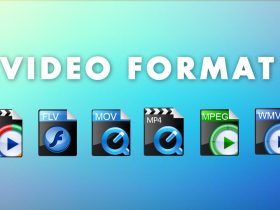Open Source projects work in a collaborative manner. Many people share their knowledge and resources for the common good. There is no owner. However, there is usually some form of governing committee. Users can submit bug reports and suggest enhancements. Bugs and enhancements are reviewed by a committee. Changes are made by a group of volunteers. There are actually two types of software that use the collaborative manner of creation. They are free software and open source software.
What is Free Software?

Free software is free in every sense of the word. You have the freedom to modify the source code, give copies to your friends, add or remove functionality, and so on. The software costs nothing. You share your changes and modifications with others. However, there is one restriction. You can’t sell it. The concept is simple. Free software promotes the idea of the free exchange and use of ideas and knowledge. This system developed from the practice of free exchange of programs at universities and colleges.
What is Open Source Software?
Open Source software is similar. You have the freedom to modify it and distribute it as you see fit. You can even sell it. However, there is one restriction. Whatever changes you make must be made available to others. You share the modified source code with others. They have the option to sell it, distribute the software for free, make changes and resell it. The difference between these two types of software is that free software always remains free.
Introduction to the Open Source Programming Languages

There are many open source programming languages. Some of these are PHP, Python, and Ruby. These languages serve to solve specific programming issues. The following list provides a brief synopsis:
– PHP is a language for writing server-side programs. It provides the same type of functionality as Microsoft’s ASP.NET, VB.NET and C#.
– Python is a multi-purpose language.
– Ruby is an object-oriented language. Its syntax and structure are similar to the languages Ada, Perl and Smalltalk.
Open source programming languages are platform-independent. They work on Windows, Macintosh and Linux systems.
Introduction To Perl
Perl is a versatile programming language created by Larry Wall in 1987. He designed this language to extract and manipulate text files. It has since grown into a rich programming language. Perl is often used to accept and manipulate information from the Web. For example, Perl is used to extract information from online forms. However, it is powerful enough to create and maintain online bulletin boards.
You can also use Perl to create dynamic web pages. It allows you to write HTML from within a Perl program. There are a variety of websites that provide a wealth of information about Perl. Some of these are www.perl.org & www.cpan.org.
Perl, like any other language, exists as a form of communication. Once the basics are understood, it is easier to express your idea or program.


























